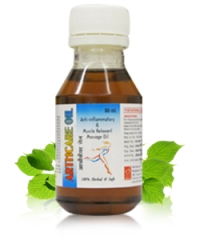Yes! There is a relation between weather changes and arthritis if you consider what people and a few claims say. Since several centuries, many arthritic patients have complained of arthritis barometric pressure pain or arthritis pain during the cold season. In fact, in 400 BC, Hippocrates claimed that there is a relation between the weather changes and pain.

However, if you want to know as to how true this is scientifically, then sadly until today, very few conclusive researches are done to prove that arthritis pain increases with a change in the weather. Nevertheless, it is the patient who experiences the impact of the weather changes on the arthritis pain and that their complaints have forced the experts to perform some studies.
Are There Any Studies Done
Even today, the arthritis patients experience accelerated joint pain when changes in barometric pressure (weight of the air) or temperature occur although researchers are not fully confident how. Keeping this in mind, lately but surprisingly, the Tufts University in Boston in 2007 admitted that for every drop of 10 degrees in the temperature or for every percentage rise in the barometric pressure, it was found that a progressive increase in arthritis pain became evident.
Further, the researchers focused on even the cadavers on whom the barometric pressure directly increased the joints’ pressure.Johns Hopkins Medicine has revealed the findings of an Argentine study that considered over 150 people with rheumatoid arthritis, osteoarthritis, and fibromyalgia. It was found that, the arthritic subjects suffered from more joint pain during the cold weather.
How Weather Changes Affect The Joints And Trigger Arthritis Pain
Normally, an arthritic patient experiences incremental pain during the cold weather. According to the experts, this arthritis barometric pressure pain is perhaps due to low barometric pressure, which means a drop in the pressure of air that mostly accompanies rainy and cold weather. Now, such a drop might result in expanding the body tissues and fluids in joints, which increases the internal pressure and consequently triggers inflammation in the joints of arthritis to exacerbate the pain. To support this, Johns Hopkins Medicine reported that during the colder days, there are fewer chances of people to go out of their homes and do some warming exercises for arthritis pain relief.
Recommended Products
Therefore, due to lack of warmth, arthritis pain is closely linked to the cold weather that can trigger more aching flare-ups.Johns Hopkins Medicine is of the opinion that there are chances of lower tolerance to pain in cold weather as well as of tissues changes in case of the alteration in the barometric pressure. In general, the fact is that the lower air pressure results in greater swelling than usual. On the other hand, some arthritic people agree of experiencing fewer flare-ups of arthritic pain during the warmer days. This is applicable to even those who live the regions of warmer climate, according to Johns Hopkins Medicine.
Further, it says that a warm climate might positively influence the symptoms, but it cannot hinder the development of the ailment. This is based on the principle that warmness releases stiffness and pain as well as increases the movement. According to the Arthritis Foundation, hot tubs are effective in colder days to control the frequency of flare-ups.
Caution: Please use Home Remedies after Proper Research and Guidance. You accept that you are following any advice at your own risk and will properly research or consult healthcare professional.




